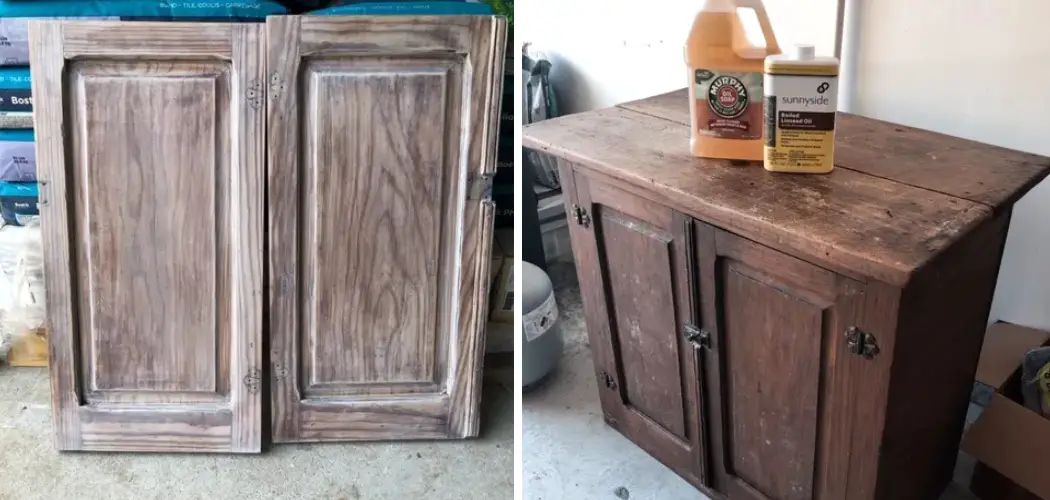Do you have dark stained wood furniture that you’d like to make look lighter and brighter? Whitewashing is an easy and affordable way to give your furniture a new look. With the right paint, technique, and tools, almost anyone can successfully whitewash their dark wooden furniture in a few simple steps.
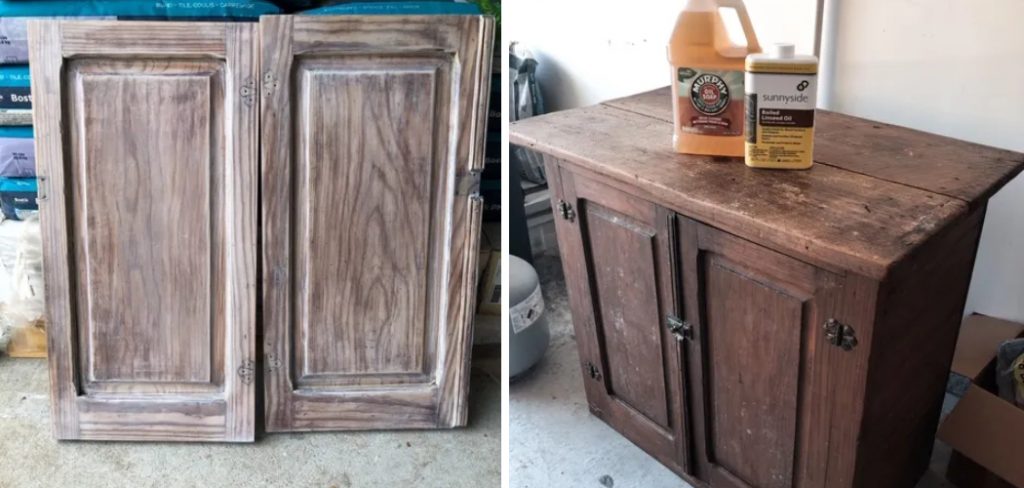
Whether you want to lighten just one piece of furniture or an entire room, whitewashing can be done quickly and easily. Always wear safety glasses, gloves, and a dust mask when sanding or using any harsh chemicals.
In this blog post, we’ll provide instructions on how to whitewash dark stained wood furniture as well as step-by-step instructions on the best methods for achieving beautiful results when whitewashing stained wood furniture. Let’s get started!
What Will You Need?
Before you begin whitewashing your wood furniture, it’s important to ensure you have all the necessary supplies. Here is a list of essential items and materials:
- Sandpaper or Sanding Block
- White Paint (Latex or Water-Based)
- Clear Sealer/Finisher
- Paint Brush or Foam Roller for painting
- Cloths for Cleaning and Wiping
- Drop Cloth or Plastic Sheet to protect floors
Once you have all the supplies needed, it’s time to start prepping your furniture.
10 Easy Steps on How to Whitewash Dark Stained Wood Furniture
Step 1: Prepare the Furniture
Start by wiping down the entire piece of furniture with a damp cloth to remove any dust and dirt. Next, use a sandpaper or a sanding block to lightly rough the surface. This will help the whitewash paint adhere better, creating a more uniform finish on your furniture.
Step 2: Apply Primer (optional)
Primer is not always necessary but can help seal in any stains on dark wood furniture and helping create an even base for painting. If you choose to use primer, make sure that it matches the type of paint you plan on using (latex-based or water-based). Allow the primer time to dry before proceeding to the next step.
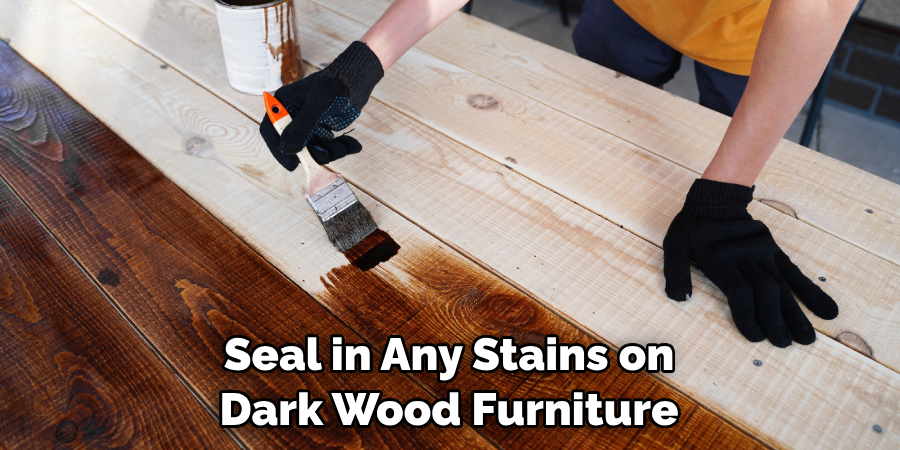
Step 3: Mix the Whitewash Paint
Mix your latex or water-based white paint with a small amount of water until it has a thick but still pourable consistency. This will help ensure even coverage and the whitewash is light enough. Remember that you can always add additional layers of whitewash if needed to achieve your desired look.
Step 4: Apply the Whitewash
Apply the whitewash evenly across the furniture using either a paintbrush or foam roller. Avoid making any area too light or dark by brushing out any excess paint for an even finish. Allow the first coat of whitewash to dry completely before applying additional coats as needed.
Step 5: Add Texture and Color (optional)
If desired, you can add texture and depth to the whitewashed wood by lightly dry-brushing on a thin layer of paint in a darker or contrasting color. This can enhance the look of your furniture and give it an interesting layered effect. As with the whitewash, allow each additional coat of paint to dry before applying more.
Step 6: Apply Sealer/Finisher
Once satisfied with the finished look, apply a clear sealer or finisher to protect the whitewashed surface from scratches, wear, and fading. Allow this time to dry before moving on to the next step. Additionally, you may need to reapply additional coats of sealer/finisher as needed.
Step 7: Clean Up Your Work Area
Before putting your furniture back into use, make sure that all tools and supplies have been properly cleaned and put away. You can use a damp cloth to wipe down the furniture and remove excess paint or sealer. Be careful not to scrub too hard, which may damage the whitewashed finish.
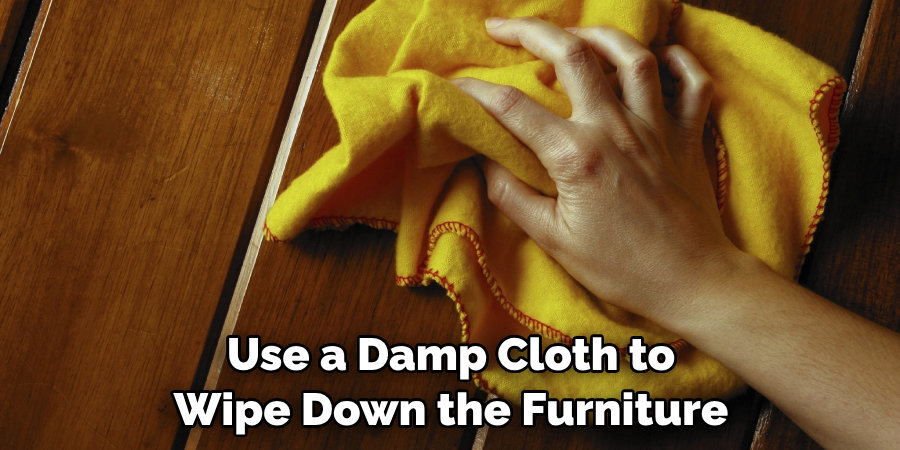
Step 8: Re-assemble Your Furniture (if needed)
If you had to disassemble your furniture in order to whitewash it, now is the time to reassemble everything. Make sure all pieces are securely fastened before using your furniture once again. Because the whitewashed finish can be easily scratched, it’s best to handle your furniture carefully when moving it.
Step 9: Keep an Eye Out for Maintenance
Check your furniture occasionally to ensure the sealer/finisher still protects the whitewashed surface from scratches, wear, and fading. If needed, apply additional coats as necessary. It will also help to keep your furniture dust-free with regular cleanings.
Step 10: Enjoy Your Newly Whitewashed Furniture
Sit back and admire your work! You have now successfully whitewashed dark stained wood furniture, giving it a new look and feel. Remember to take proper care of your furniture and enjoy it for years to come.
With these easy steps in mind, you can transform any piece of dark wooden furniture into something light and airy with just a few simple steps. With a little bit of time and effort, you can easily give any room in your house an instant update with beautiful whitewashed furnishings.
5 Additional Tips and Tricks
- Take your time when whitewashing slowly to ensure you get the desired effect.
- If you’re using a brush, use a soft, natural-bristled brush for best results.
- If you’re using washable paint, you can easily adjust the color and intensity of your whitewash by adding more or less paint to the mixture.
- For a more rustic look, apply whitewash with a rag instead of a brush for an uneven and textured finish.
- Remember to seal the wood once you’ve finished applying the whitewash so that it lasts longer and looks better!
And there you have it – your ultimate guide on whitewashing dark stained wood furniture!
5 Things You Should Avoid
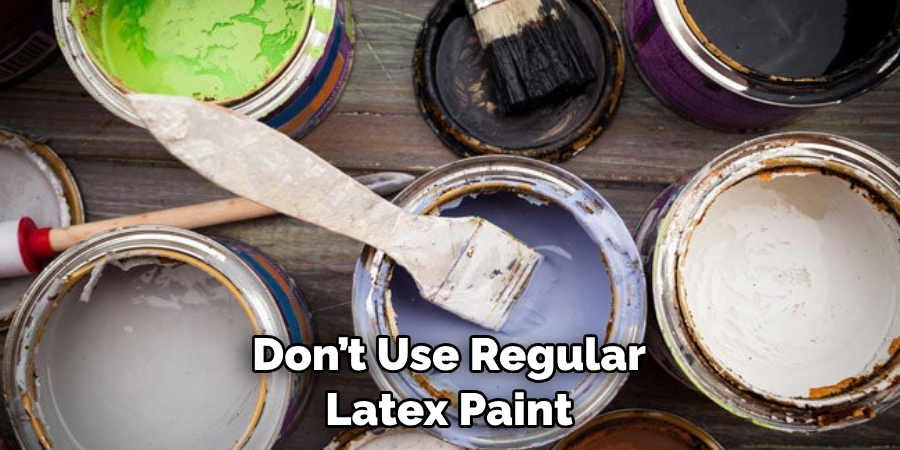
- Don’t use regular latex paint or any other acrylic-based paint when whitewashing – these paints won’t give you the desired effect.
- Don’t use too much water when making a whitewash mixture, as this can dilute the paint and create an uneven finish.
- Don’t apply the whitewash too thickly; otherwise, it will look heavy and clumpy on the wood.
- Avoid using metallic paints in your whitewashing process – these won’t give you the desired effect either.
- Lastly, don’t forget to clean your wood furniture before you begin whitewashing properly! This will ensure that your finished project looks its best!
Following these tips and tricks should help make sure that your next project is a success! With a little patience and creativity, you can create stunning pieces of furniture you can be proud of.
Can You Light Stain Over Dark Stain?
The short answer is yes, you can lighten a dark-stained wood with a lighter stain. However, you should be aware that the lighting effect won’t be as dramatic as if you had used whitewash to do it. But this could be a great option if you’re looking for an easy and affordable way to lighten your wood furniture slightly.
When staining over a dark stain, you’ll want to make sure that you choose a light-colored stain to achieve the desired effect. You should also be aware that the new color won’t completely cover up the old one – some may still be visible. Be sure to test your stain on a scrap piece of wood before applying it directly onto your furniture to ensure it’s the right color.
With these tips in mind, you’re now armed with all the information you need about whitewashed, dark, stained wood furniture! Follow these steps and tips for an easy and affordable way to give your pieces of furniture a stunning makeover.
What is the Difference Between Whitewash and Stain?
The main difference between whitewash and stain is that whitewash is a mix of white paint and water, while stain is made up of pigments suspended in oil or other liquids. Whitewash can give the furniture an aged, rustic look, adding texture and color variation. Stain is more commonly used to give wood a uniform color without creating too much contrast or texture.
Whitewashing dark stained wood will lighten it more drastically than staining with a lighter color would. However, staining would be your best choice if you’re looking for a subtle lightening effect. Furthermore, staining is generally a lot easier since it doesn’t require mixing – you just apply it directly onto the wood.
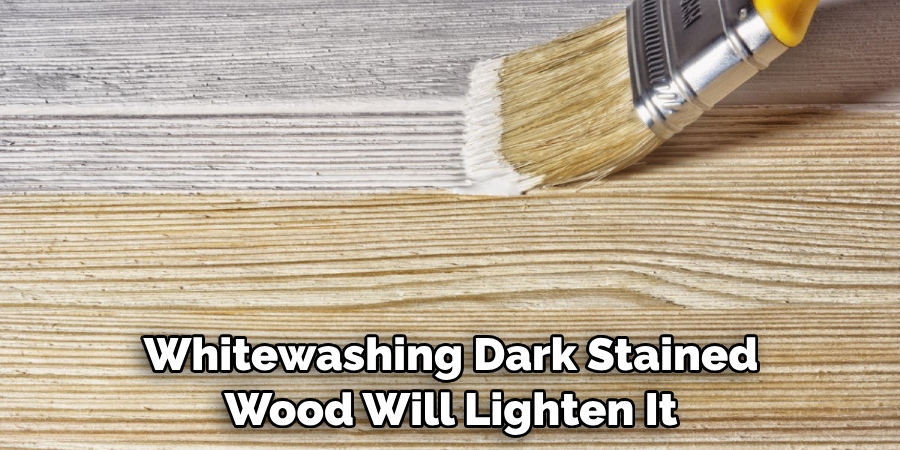
So if you’re looking to whitewash your dark stained furniture, make sure to follow all of the tips and tricks outlined in this guide for the best results! And if you’d rather go with a subtler lightening effect, try staining instead. With these two options, you’ll be able to give your furniture a stunning new look that will last for years!
Conclusion
Whitewashing dark stained wood furniture is a great way to give an old piece of furniture new life. It’s also much easier and less expensive than replacing the piece. All you need to do is select the right paint brush, mix together paint and water, apply the mixture to your furniture, then let it dry completely.
With regular maintenance and proper precautions, whitewashing stained wood furniture can help you create a light and airy space in your home that won’t soon be forgotten. Plus, the look of whitewashing creates a unique impact on any room – allowing for a large dose of charm without having to change too many other elements within the room or home.
Hopefully, the article on how to whitewash dark stained wood furniture has been helpful in clarifying the process for you. With these tips and tricks, you’ll have no trouble giving your furniture a stunning new look that will last for years to come! So use this simple technique to create beautiful white-washed pieces and breathe new life into any room in your home!

